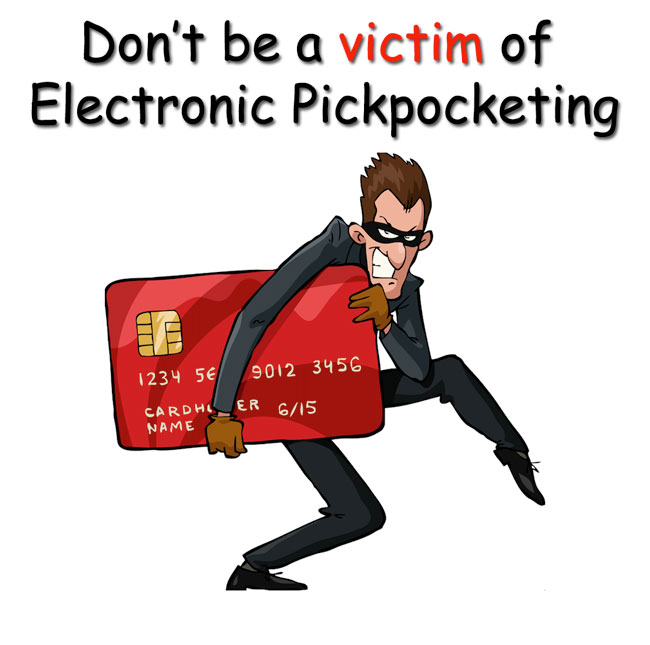Credit card fraud and identity theft have become a common problem that has affected many thousands of people over the years. The methods of stealing credit card information has become quite sophisticated and seems to be following a minute step behind credit card theft protection.
At one time it was necessary to have physical possession of the credit card and with a hand held skimmer pass it over the magnetic strip of the credit card and read the card information. The information was downloaded to a program that generated the information suitable for printing on credit card material that can be purchased on the Internet.
“Electronic Pick Pocketing”
One of the latest methods employed by thieves to steal credit card information is called “electronic pick pocketing.” Since 2006, credit cards have included an RFID chip, or radio frequency identification chip. The RFID chip holds more information than a magnetic strip found on a credit card and it can be read quicker. The RFID chips can be read with a frequency reader, or sometimes called scanners, that are inexpensive and easy to obtain.
The frequency readers send out signals that are received by the antennae in the RFID chip and activate the chip. The thief is able to hi-jack the credit card information without physical contact with the card. The frequency readers can read and store the information at any time by just passing within 30 feet or so of an unprotected credit card.
Since the RFID chip can be read the credit card information through a wallet, purse or brief case, it is essential the credit card owner keep the card in a secure sleeve that does not allow the frequencies to emanate beyond the holder. There are wallets and credit cards holders that use protective material to prevent the frequency readers from reading the RFID chip and allowing thief’s to steal information.
Types of Wallets and Card Protectors
- The most common wallet material is aluminum or stainless steel. Both aluminum and stainless steel prevents frequency readers from penetrating the surface and getting to the card. Aluminum and stainless steel also has other benefits beside protection from frequency readers and includes protecting the card from scratches, demagnification and warping. For those who carry their wallets in the back pocket may find an aluminum or stainless steel wallet uncomfortable. These types of wallets are suitable for carrying in a purse, briefcase or satchel, as well as, slacks or jacket pocket.
- RFID protective wallets are also made with fine metal wires or thread that offers flexibility similar to nylon or leather, making the wallet comfortable to carry in a pocket. The wallets have a metallic look making them fashionable and an added extra is the wallets are water, dilute acid, salt and sweat resistant. These wallets can be carried in a pocket comfortably as well as carried in a briefcase, purse or satchel.
- Wallets made with metal alloy shield act as a Faraday Cage, which is an enclosure that blocks out the transmitting waves. These types of wallets are somewhat stiffer than a leather wallet, but offer protection from those pesky RFID frequency readers. These wallets also have pockets to keep cash and other cards organized.
- RFID blocking sleeves are an individual envelope that is large enough for 2 credit cards. They can be placed in a pocket, wallet, briefcase or purse and receive the same protection as an RFID proof wallet. If requested, a bank will issue a customer a sleeve for the protection of their credit card.
An RFID wallet or protector will only protect the credit card when the card is securely in the wallet or holder. The card is subject to skimming anytime it is taken out of the wallet. It is beyond essential to protect your credit card at all times.
Never let the card out of your sight when making a purchase and after making your purchase, put the card away immediately. Do not set it down while signing the credit card slip. Technology has made our lives easier, but at the same time technology has made it easy for us to get scammed, if we are not careful.



